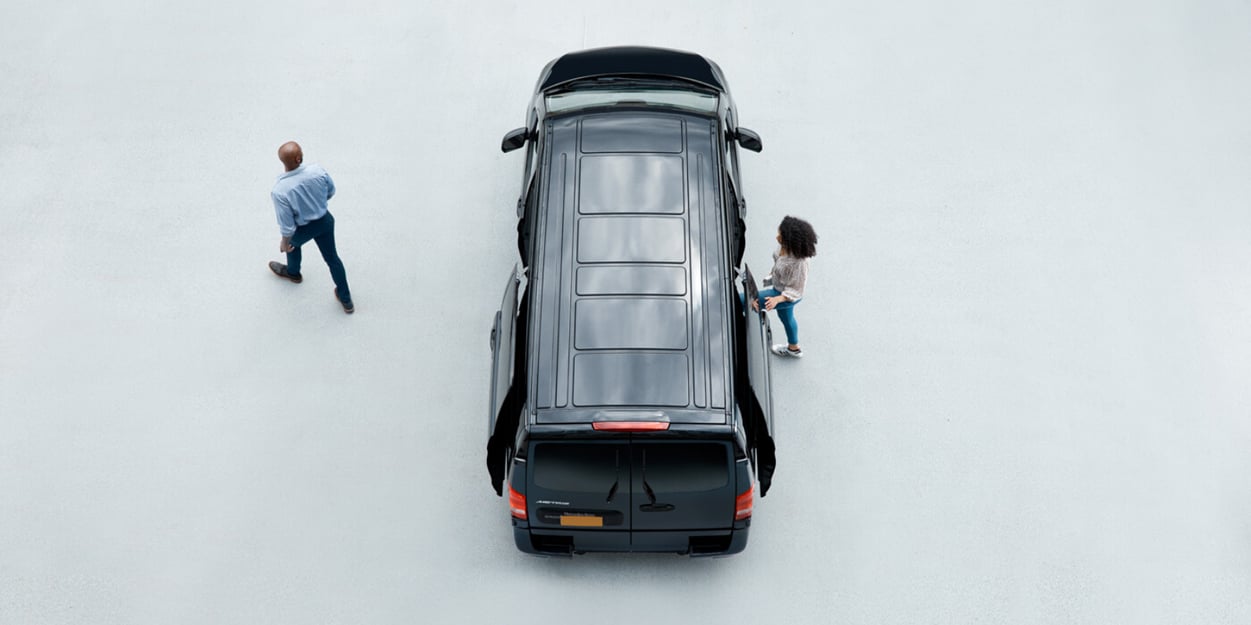The world is entering the golden age of embracing Mobility as a Service (MaaS), with cities around the globe turning to shared bikes, scooters, and demand-responsive transport to move their communities. Perhaps one of the biggest trends in MaaS, however, is the dramatic adoption of shared DRT.
Previously, individuals were likely faced with two often unappetising choices: either sink enormous sums of money into owning a car, or spend valuable time navigating bus travel that may be inconvenient, if available at all. The result: Bus ridership in Britain has declined from 5.2 billion annual journeys to 4.8 billion in the last decade.
Those figures, though, represent transport before COVID-19. The pandemic only dramatised the decline as fewer people than ever turn to public transport – ridership in major European, U.S., and Chinese cities has declined by 50-90% from pre-crisis levels . And yet, at the same time, efficient public transport is as important as ever before.
Essential workers need to get to their places of work; healthcare workers need to get to hospitals in major cities where personal cars are scarce; and delivery workers need access to transport to deliver goods. And, as cities start moving again, transport needs to be flexible and use existing resources in new ways to address shifts in demand. Public transport in most places as we know it has to adapt.
That’s why many cities are considering dynamically routed, demand-responsive transport solutions, which blend the best of public transport with ride-hailing’s most popular features. Travelers can request an inexpensive shuttle that picks them up at a nearby corner within a few minutes. Vehicles are then dynamically routed to the final destination, with the ability to pick up other passengers heading in the same direction along the way, shifting with evolving safety requirements. DRT networks can either blanket a whole city or work in tandem with existing transport infrastructure, acting as a demand-responsive link to high-frequency transport hubs and light rail stations.
And as lockdown measures are lifted and communities return to work slowly, DRT technology can be applied to traditional fixed lines, adapting quickly in order to abide by physical distancing regulations, contact tracing, and safety and sanitary measures.
The idea is nothing new, but the task is difficult to perfect. Dial-a-ride services like Australia’s Telebus offered ‘on-demand’ rides a decade ago, but customers needed to book 24 hours in advance. It was notoriously unreliable and failed to gain traction with passengers. In New York City, lawmakers are lambasting Access-A-Ride for failing to provide anything close to high-quality service for its 170,000 community transport passengers. For transport networks to effectively reverse declining bus ridership, they’ll need to design a bespoke service that meets the unique needs of their passengers and addresses safety concerns during this unique time.

Determine what passengers need.
Every city is different, and therefore has specific and unique problems it is trying to address with DRT. Cities across the UK offer concessions for students, elderly citizens, and those with disabilities, often making journeys entirely free for qualifying passengers. In the Boston suburb of Newton, MA, the city launched a new DRT service called NewMo that caters specifically to its growing population of elderly citizens.
To accommodate those with limited mobility, NewMo includes wheelchair accessible vehicles (WAVs), and all vehicles are retrofitted with a stepping stool and additional handles to facilitate an easy and safe boarding experience. In collaboration with Newton’s Senior Center, all drivers provide high-touch support, including proactively assisting riders with bags and automatically opening the van’s sliding door upon arrival.
Plus, in recognition of lower smartphone adoption among older adults, the service allows riders to book demand-responsive or pre-scheduled journeys through the mobile app or over the phone. All phone operators receive elderly citizen sensitivity training, including expectations to speak slowly and repeat instructions. Just as every community has its own unique needs, DRT can address a seemingly endless list of mobility concerns and adapt accordingly. There is no clear blueprint for developing a DRT service, and each one can and should be quite different in order to make it successful.

Create zones that benefit most passengers.
The first step in building a successful DRT service is choosing the right operational boundaries. First determine what the goal is: to operate a first-and-last mile network around transport hubs, fill transport gaps at the weekend, cater to weekday commuters? What the service aims to achieve will paint a picture of where to operate. But be careful: bigger isn’t always better. The larger the zone, the larger the number of possible route combinations. That means doubling the size of the service zone may necessitate tripling the number of vehicles on the road to maintain the same quality of service. The shape of the service zone also plays a role. A square or circle may seem right in theory, but it may be harder to aggregate shared rides compared to a more strategic zone that captures riders travelling in the same direction.
Design specific service elements.
Next, it’s important to consider quality of service metrics such as the time it takes a vehicle to arrive and the distance passengers could walk to meet their drivers for pickup at a virtual bus stop. In today’s world, it’s also important to consider advanced safety measures, such as how many people should be able to share a vehicle and how often a vehicle may need to receive a heavy cleaning. These measures are both important on a regulatory level, and as we think about communities’ ongoing fear of re-contamination of the disease, they are also important influencers of quality of service.
Via's data show that first-and-last mile commuter services, or those in urban environments, carry an acceptable wait time of about 4-6 minutes. However, for rural areas, wait times closer to 15 minutes can be acceptable, as other public transport alternatives can easily be an hour if they exist at all. Once an appropriate wait time is established, determine the acceptable walking distance to a virtual bus stop.
Demand-responsive mobility deployments can be drastically streamlined if passengers walk a short distance to meet their driver, but the acceptable distance is impacted by a number of variables, like steep terrain, extreme weather, or target population (e.g., if the service is primarily geared toward elderly citizens). If the service is catering to those needing wheelchair access, maybe meeting at a virtual bus stop isn’t an option at all. These service decisions, designed with the passenger in mind, as well as selecting the type of vehicles and number of drivers, can quickly contribute to building a demand-responsive service passengers love and trust.

Understand how people want to pay.
Because a new demand-responsive system can act as an extension of the greater public transport network, the price of a journey should reflect other modes of transport. For example, in Seattle, demand-responsive rides are automatically applied as a transfer toward a trip on a bus or a light rail train. And while passengers can pay through the app with a linked credit card, it’s vital to ensure the service can accept a variety of payment methods such as cash, voucher payments, or a full integration with the transport system’s native payment system.
Plus, digital payment is only growing in importance as communities try to limit interactions as much as possible to slow the spread of COVID-19. In suburban Sydney, the service Cooee Busways became one of the first demand-responsive transport providers in Australia to fully integrate with Opal Connect, a new account-based ticketing system by Transport for New South Wales (TfNSW).
Find the right partner.
It’s one thing to power a dial-a-ride service with a few vehicles; it’s another thing entirely to power a DRT service at scale with dozens or even hundreds of vehicles delivering hundreds or thousands of trips every day. The ability to do the former usually doesn’t transfer to the latter — as the number of vehicles and trips increase, the number of possible passenger/vehicle assignments and routing options grow exponentially, which requires both an algorithm and automated service management tools built to handle scale.
It’s also important to note that not every mobility technology company chooses to share their data. Some guard it closely in the name of protecting key business indicators like revenue, pricing models or demand from competitors, or in order to shield their actual environmental impact. But those that choose to share data do so in the name of helping municipalities and transport authorities create a better place for everyone to live and work.
By partnering with a company that agrees to share its data, cities can maximise the value of the DRT service — because with so many ways to use the data, DRT isn’t just a transport improvement; it’s a way to improve the entire municipality. Powering a flexible service that is continuously optimised in real time is a big technical challenge – and an ever-increasing global necessity. Transport authorities should find a partner who is not only up to the challenge, but proven in multiple markets they know how to deliver results.




